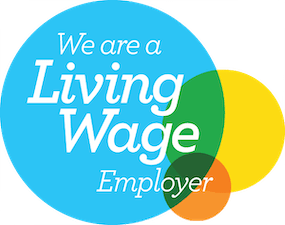Disclaimer: The following content is an archive of Substantive Research Discovery – Trending Investment Themes, as delivered as weekly insights to our paid subscribers. Links to gated content have been removed.
TopDown Charts: Market cycle guidebook
The macro-edge-risks of recession and deflation risk on the one edge vs growth reacceleration + inflation resurgence risk on the other edge loom alongside (geo)political risk, expensive (US/tech) stocks, and increasingly bullish sentiment.
Markets meanwhile across the risk spectrum appear mostly priced for a benign middle-path of policy perfection.
Again: mind the macro edges in 2024. Click here.

StoneX: Quad investing and the dark side of the moon
Quad analysis breaks down the economic cycle in four phases: one of them is “the dark side of the moon”, where US Treasuries are the asset to hold; The deflationary bust.
While its difficult to know what quad to be in, in real time, it’s perhaps easier to know which one not to be in. Avoid the the dark side of the moon.
The second wave of inflation should be boosted by tariffs and immigration restrictions in 2025, Tax collections, remittances to Mexico, and unemployment benefit suggest growth is slowing and due to public spending and demography, a high-unemployment recession has become very unlikely. Click here.

Steno Research: Trillions of USDs waiting to be unleashed
If we look at M2 trends (narrow money + time deposit / MMFs and similar assets), the broad USD measure remains a staggering 18% above trend with M2 nominally trending almost 4 trillion USDs above a long-term trajectory.
The similar trend in EURs is much less extraordinary with M2 currently 7% above trend, which translates to a little more than 1 trillion EURs nominally.
There is still a large excess of USDs in the system. So where are those excess USDs parked? Click here.

Eurizon SLJ: US disinflation – winning the war but losing the battles
The reality is that CPI inflation in the US has already unwound 85 percent of the Pandemic over-shoot; we are only 1.1 percent away from the target, from as far as 7.1 percent above the inflation target.
I think the war on inflation is being won, but it does feel that doves like me are still losing battles along the way.
In any case, January headline CPI was 3.1 percent, slightly higher than expected, and probably reflected some start-of-the-year statistical and seasonal factors. The chart below shows that CPI inflation in the US has indeed flattened out a bit (but still with a gradual decline) in recent months. Click here.

International Economy: The looming global savings drought
The topping out of world net savings growth was hidden by the clouds of massive fiscal and monetary covid stimulus.
When the skies began to clear in 2022, those asset managers and central bankers who expected the relationships between official rates and long-term bond rates that prevailed during the savings glut years to continue were surprised.
They missed the fact that by 2017, the savings glut was conclusively over. Click here.



Capital Economics: Is China exporting deflation?
The decline in China’s export prices has been mirrored by falling import prices in advanced economies.
However, imports from China make up only a small fraction of total consumption in advanced economies, so the impact on inflation has been limited.
Looking ahead, China is not expected to become a bigger deflationary force as export prices are back to pre-pandemic levels and there is limited scope for further decline. Click here.

Renaissance Macro: Consensus needs to wake up
The consensus is beginning to come around to a stronger growth view.
However, as growth expectations are climbing, investors appear to believe inflation is poised to reaccelerate. Two-year inflation breakeven rates, as an example, have climbed to their highest since April 2023.
The consensus likely has more room to revise up growth, but expectations of a re-emergence of underlying inflation pressures should be faded. Click here.


Satori Insights: Bordeaux, champagne and the art of blending earnings
Earnings forecasts are typically formulated not in terms of growth rates but of levels: a specific EPS, sales, or EBITDA number at a particular point in time.
While the distinction sounds simple enough, it turns out to have profound implications, especially when it comes to thinking about future growth.
Are earnings, like a fine Bordeaux wine, best consumed one vintage at a time? Or should they instead, like most champagne, be blended for a more consistent flavour? Click here.

TS Lombard: Inflation outlook – ruh roh or chillax?
The inflation outlook for various regions of the world is a mix of concerns and stability. In the US, inflation is expected to settle above the 2% target but within an acceptable range.
The Eurozone is projected to undershoot the 2% target, leading to policymakers cutting rates further. The UK is expected to have inflation settle within the 2% target, despite some stickiness in core services.
China remains in disinflation, with wage compression and oversupply in new sectors. Overall, the global landscape shows a stabilization of inflation, with some idiosyncrasies in different sectors. Click here.


Macro Risk Advisors: Equity momentum and rug pulls + short video
Momentum has a strong positive correlation with the S&P500, but investors fear that a sharp reversal of momentum could be swift and unforseen, wiping out the returns of this bull market.
The below chart charts the correlation between momentum crashes and the S&P500. It shows that momentum crashes only occur when the correlation between momentum and S&P is negative (Left hand side of the chart). Perhaps bulls can take some comfort from that. Click here for the one pager, here for the video (recommended).










